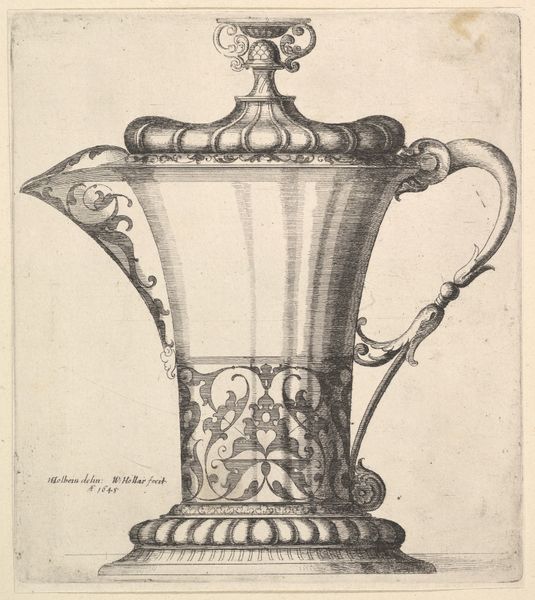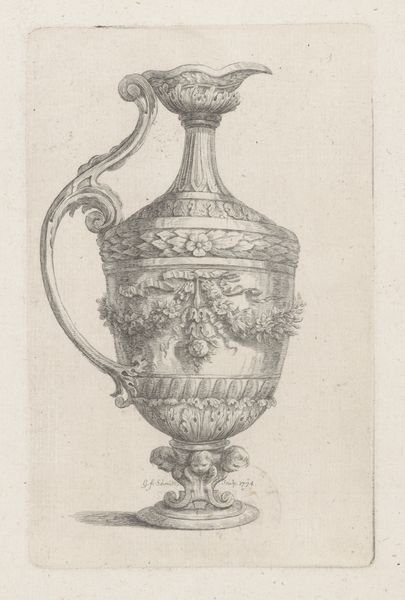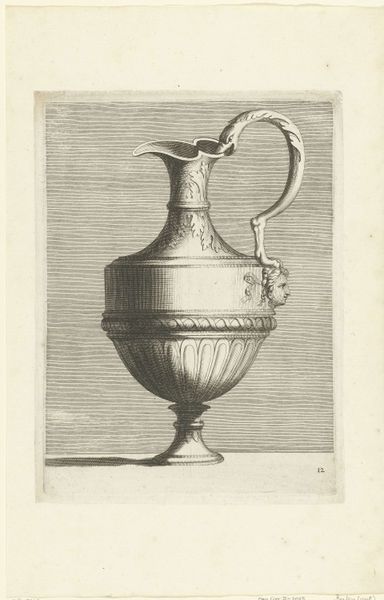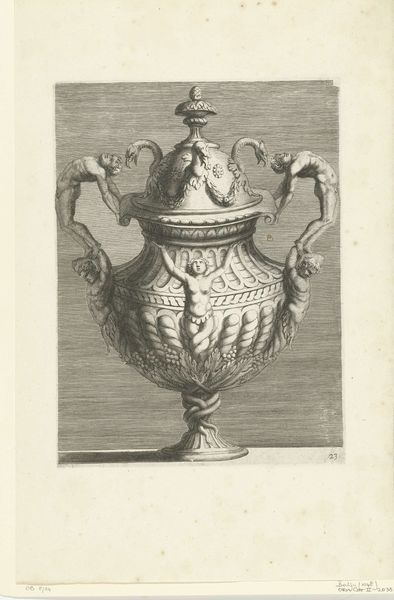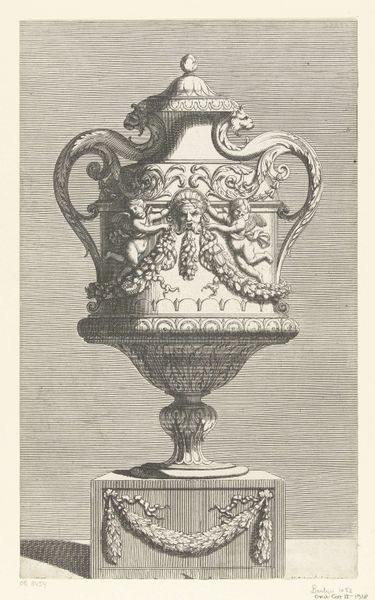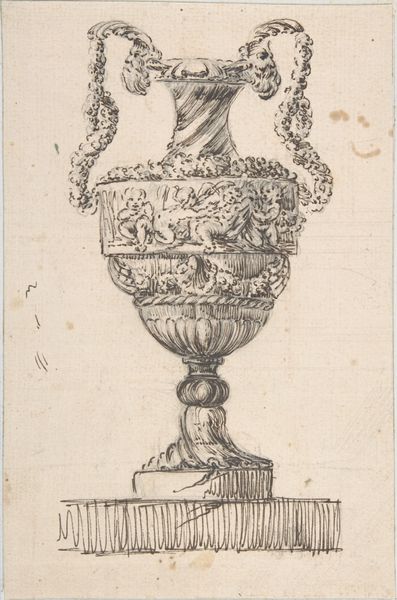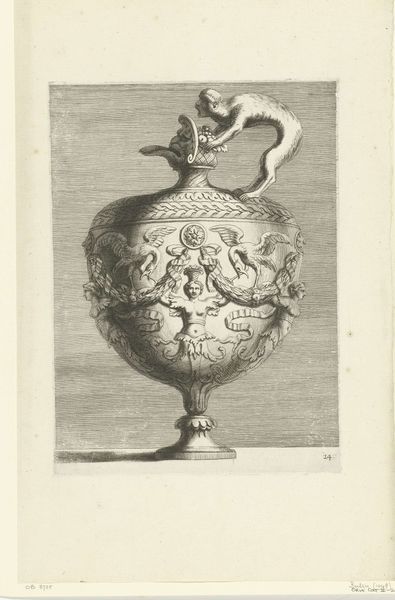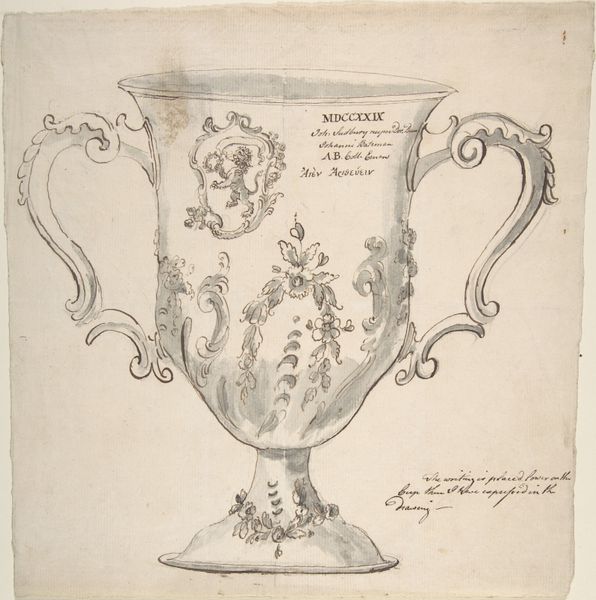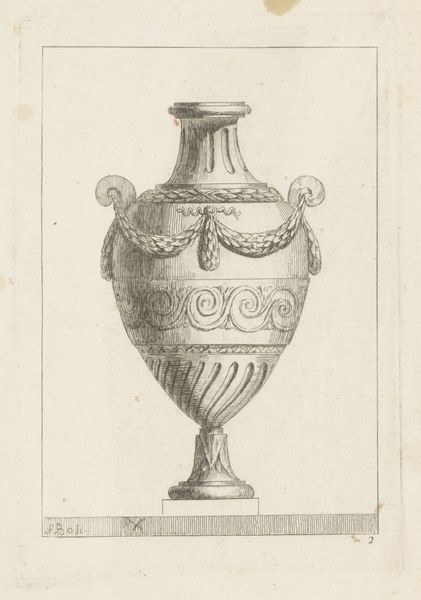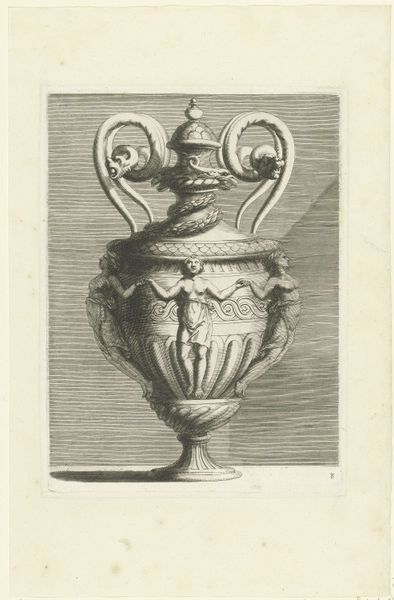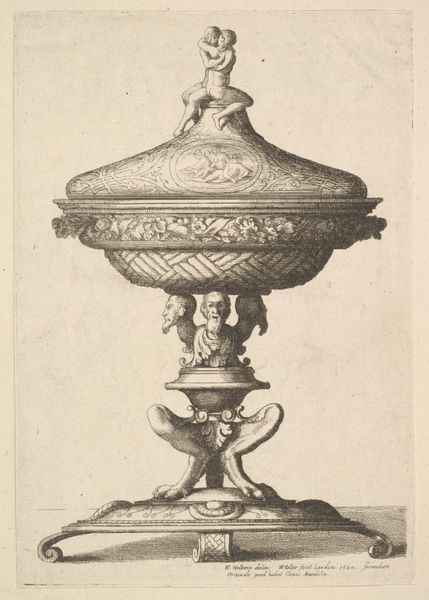
Jug with lid, engraved with arabesque pattern, the narrow spout to right ending in snake's head, handle to left. 1649
0:00
0:00
drawing, print, engraving
#
drawing
#
baroque
# print
#
decorative-art
#
engraving
Dimensions: Plate: 7 × 5 13/16 in. (17.8 × 14.7 cm) with thread margins
Copyright: Public Domain
Editor: So, here we have "Jug with Lid" created by Wenceslaus Hollar in 1649, a drawing, a print, specifically an engraving. It's so ornate, it feels very decorative. What’s striking to me is how detailed and symmetrical the design is. How would you interpret the visual language being used here? Curator: Indeed. The engraving reveals an elaborate display of arabesque patterns that snake and swirl across its form. The jug isn't just a container; it’s a vessel of symbolic meaning. Look at the snake’s head at the spout. Snakes often represent transformation, rebirth, and even healing across various cultures. Considering that, what does this say about the value and cultural status of the jug and what it may contain? Editor: Interesting, the snake suggests it is more than utilitarian... the transformation could apply to liquids, like alchemy, maybe even related to medicine? So, what does the rest of the ornamentation tell us? Curator: Precisely! Now, the arabesque patterns, common in Baroque art, signal complexity and opulence, reflecting the era's grandeur and love for the intricate. This continuous, interlacing design lacks a clear beginning or end, alluding to infinity and divine perfection. Does it evoke a sense of permanence and elegance? What psychological effect might it have on its users? Editor: Absolutely. It’s like a controlled, yet explosive energy held within this form. A user would surely feel regal or special holding it, thinking about those endless arabesques and feeling secure about their place in society. I hadn't considered how much visual language informs how we value an object! Curator: That’s exactly right. The symbology present transforms a common item into something profound, enriching our cultural memory through visuals. Editor: Thanks for clarifying those important features – seeing the symbols really adds a new layer. I'll definitely look at decorative art differently now!
Comments
No comments
Be the first to comment and join the conversation on the ultimate creative platform.

